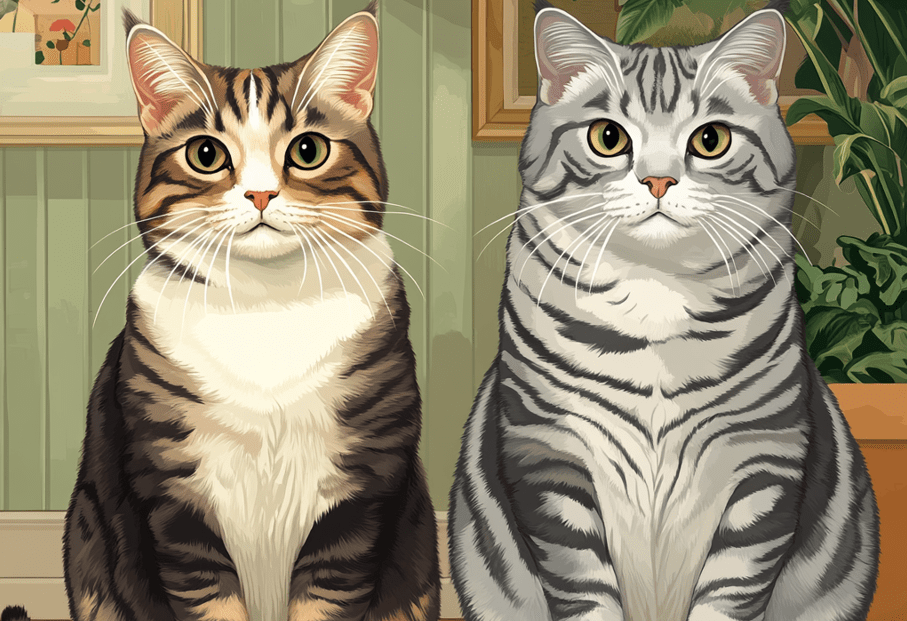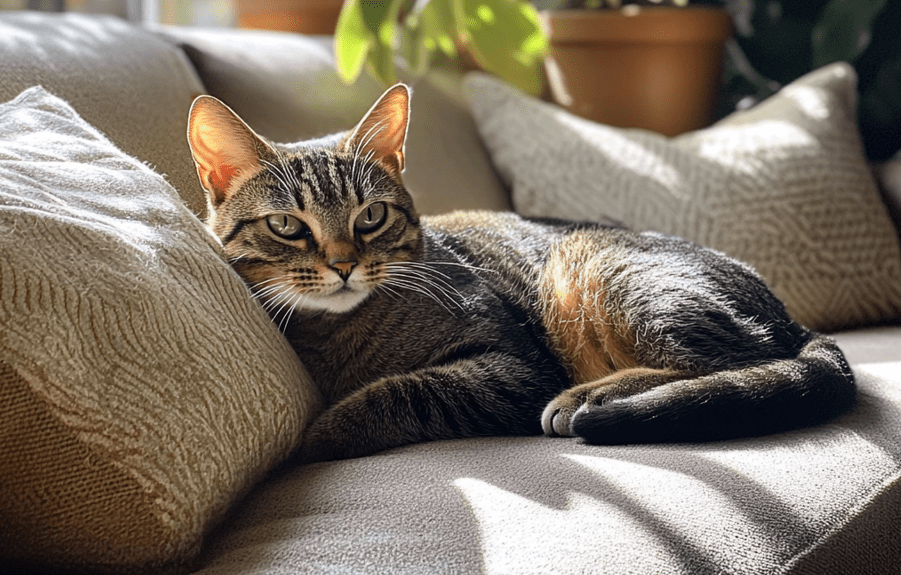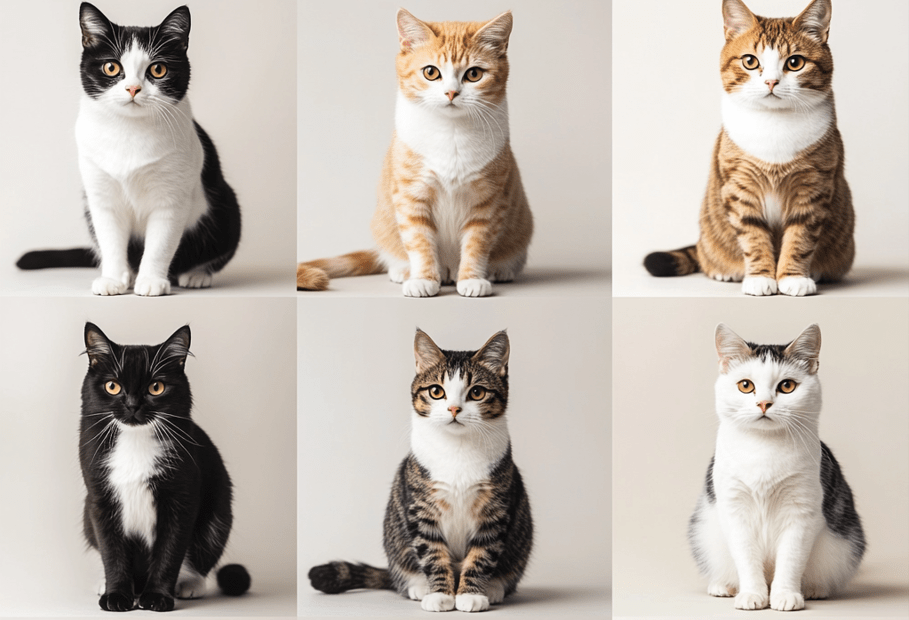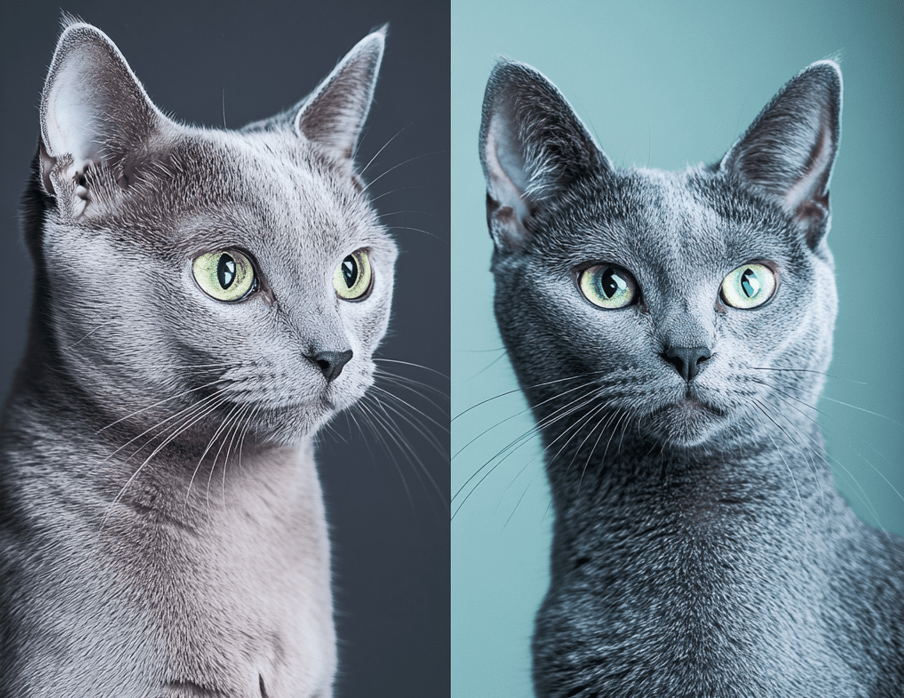
Domestic Shorthairs, known for their playful and curious nature, can easily fall prey to boredom, especially when kept indoors. Puzzle feeders are an excellent solution to engage their minds and satisfy their natural hunting instincts, making them ideal for preventing boredom in Domestic Shorthairs. These interactive toys not only provide mental stimulation but also promote slower eating and physical activity, enhancing your cat’s overall well-being. In this comprehensive guide, we’ll explore the best puzzle feeders for Domestic Shorthairs to prevent boredom, offering insights into their benefits, types, and top recommendations to keep your feline friend entertained and healthy.
Why Domestic Shorthairs Need Puzzle Feeders
Domestic Shorthairs are a diverse breed with high energy levels and a strong instinct to hunt. Without adequate stimulation, they may develop behavioral issues such as excessive meowing, scratching, or even aggression. Boredom in cats can also lead to stress-related conditions like over-grooming or inappropriate urination. Puzzle feeders tap into their natural foraging behaviors, providing both mental and physical exercise. According to a 2016 study in the Journal of Feline Medicine and Surgery, puzzle feeders reduce stress, aid in weight management, and decrease anxiety in cats, making them a vital tool for indoor Domestic Shorthairs.
Benefits of Puzzle Feeders for Domestic Shorthairs
Mental Stimulation: Puzzle feeders challenge your cat to problem-solve, keeping their mind sharp and engaged.
Slower Eating: Many Domestic Shorthairs eat too quickly, which can lead to digestive issues. Puzzle feeders slow down mealtime, promoting healthier digestion.
Physical Activity: Manipulating feeders encourages movement, helping to combat obesity—a common issue in indoor cats.
Stress Reduction: The act of foraging and licking is calming, reducing anxiety and stress-related behaviors.
Boredom Prevention: By providing a fun and rewarding activity, puzzle feeders keep your cat entertained, reducing destructive behaviors.
Types of Puzzle Feeders for Domestic Shorthairs
Puzzle feeders come in various designs, each catering to different skill levels and preferences. Understanding the types available can help you choose the best one for your Domestic Shorthair.
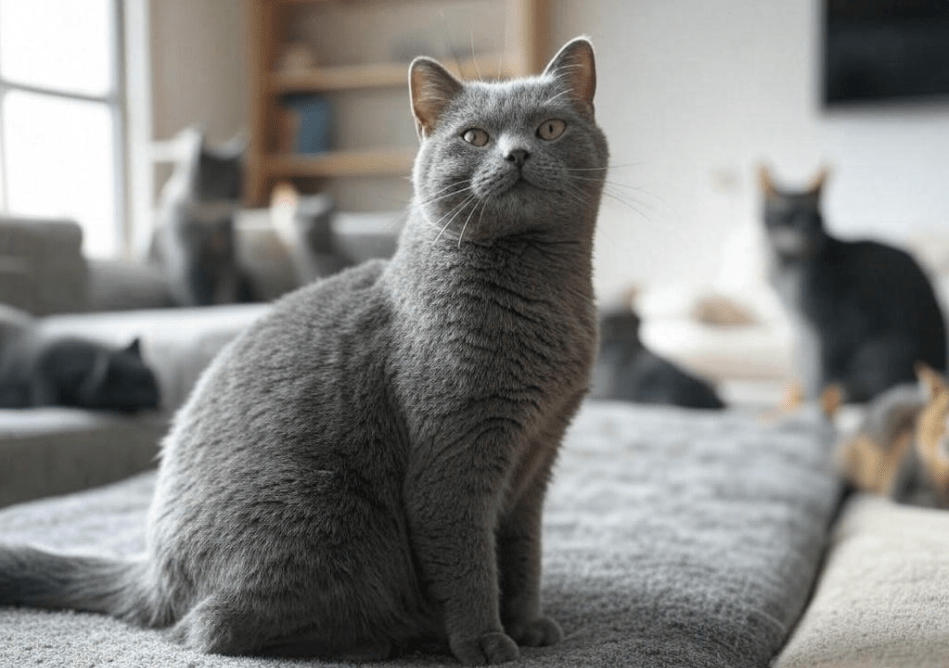
1. Stationary Puzzle Feeders
These feeders have a fixed base with compartments, cups, or channels that require cats to use their paws or tongues to retrieve food. They are ideal for beginners and cats who prefer less physical activity.
2. Mobile Puzzle Feeders
Mobile feeders, such as balls or tubes, dispense food as they are rolled or pushed. These are great for active Domestic Shorthairs who enjoy chasing and pouncing.
3. Slow Feeder Bowls
Designed with ridges or obstacles, slow feeder bowls make cats work harder to access their food. They are excellent for fast eaters but may offer less mental stimulation than other types.
4. Snuffle Mats
Snuffle mats mimic grass, allowing cats to sniff out hidden kibble or treats. They are particularly calming and engage a cat’s sense of smell.
5. Licking Mats
Licking mats, often used with wet food, have textured surfaces that encourage licking, which is soothing and promotes saliva production for better digestion.
Top 10 Puzzle Feeders for Domestic Shorthairs
Here’s a curated list of the best puzzle feeders for Domestic Shorthairs, selected based on durability, ease of use, engagement level, and suitability for both wet and dry food. Each recommendation includes pros, cons, and why it’s ideal for preventing boredom.
1. Nina Ottosson Buggin’ Out Puzzle & Play
Type: Stationary Puzzle Feeder
Skill Level: Intermediate
Food Type: Dry
Description: This eco-friendly puzzle features 14 hidden compartments covered by sliding ladybugs and swiveling leaves. Cats must manipulate the pieces to access kibble, providing excellent mental stimulation.
Pros: BPA-free, engaging design, suitable for all ages.
Cons: May slide on hard floors, not ideal for wet food.
Why It’s Great: The Buggin’ Out Puzzle is perfect for Domestic Shorthairs who need a moderate challenge. Its interactive elements keep cats engaged for longer, reducing boredom.
2. PetSafe Funkitty Egg-Cersizer
Type: Mobile Puzzle Feeder
Skill Level: Beginner
Food Type: Dry
Description: This egg-shaped toy releases kibble as it’s rolled, encouraging active play. Adjustable holes allow you to control difficulty.
Pros: Affordable, easy to clean, promotes exercise.
Cons: Small capacity, not suitable for wet food.
Why It’s Great: Ideal for young or less experienced Domestic Shorthairs, this feeder combines physical activity with mental engagement, perfect for busting boredom.
3. LickiMat Catster
Type: Licking Mat
Skill Level: Beginner
Food Type: Wet or Dry
Description: Made from non-toxic silicone, this mat has grooves that hold wet food or spreads, encouraging licking to slow eating.
Pros: Easy to clean, promotes digestion, reduces anxiety.
Cons: Not as challenging for advanced cats, hand-wash only.
Why It’s Great: The LickiMat is excellent for Domestic Shorthairs who love wet food and need a calming activity to prevent boredom.
4. Catit Senses 2.0 Food Tree
Type: Stationary Puzzle Feeder
Skill Level: Intermediate
Food Type: Dry
Description: This vertical feeder requires cats to paw kibble through holes to lower levels, mimicking hunting. Its wide base ensures stability.
Pros: Stable, easy to disassemble, adjustable difficulty.
Cons: Large cats may tip it, dry food only.
Why It’s Great: The Food Tree engages Domestic Shorthairs’ hunting instincts, providing a fun and challenging way to eat.
5. PAW5 Wooly Snuffle Mat
Type: Snuffle Mat
Skill Level: Beginner to Intermediate
Food Type: Dry
Description: This mat has fabric tubes where kibble is hidden, encouraging sniffing and foraging.
Pros: Calming, machine-washable, suitable for all ages.
Cons: Not for wet food, may fray with heavy use.
Why It’s Great: Snuffle mats are ideal for hyper Domestic Shorthairs, as sniffing is a soothing activity that prevents boredom.
6. Dlder Cat Slow Feeder
Type: Slow Feeder Bowl
Skill Level: Beginner
Food Type: Wet or Dry
Description: This fish-shaped silicone bowl has ridges to slow eating, reducing the risk of obesity and digestive issues.
Pros: Durable, non-toxic, cute design.
Cons: Less mentally stimulating, hard to clean.
Why It’s Great: Perfect for Domestic Shorthairs who eat too quickly, this feeder promotes healthier eating habits while adding a fun element to mealtime.
7. Doc & Phoebe’s Indoor Hunting Feeder
Type: Mobile Puzzle Feeder
Skill Level: Intermediate
Food Type: Dry
Description: This set includes three mouse-shaped feeders that can be hidden around the house, encouraging cats to “hunt” for their meal.
Pros: Stimulates hunting instincts, promotes exercise, large capacity.
Cons: Best for single-cat homes, not for wet food.
Why It’s Great: This feeder taps into a Domestic Shorthair’s predatory nature, making mealtime a thrilling adventure that prevents boredom.
8. Nina Ottosson Rainy Day Puzzle
Type: Stationary Puzzle Feeder
Skill Level: Advanced
Food Type: Dry
Description: With swiveling raindrops and sliding compartments, this puzzle challenges even the smartest Domestic Shorthairs.
Pros: High mental stimulation, durable, non-slip base.
Cons: Complex for beginners, dry food only.
Why It’s Great: Ideal for clever Domestic Shorthairs who need a tough challenge to stay engaged and avoid boredom.
9. Brightkins Spinning Hydrants Treat Puzzle
Type: Stationary Puzzle Feeder
Skill Level: Intermediate
Food Type: Dry
Description: This puzzle has spinning hydrants that release treats when manipulated, offering a fun and engaging challenge.
Pros: Interactive, easy to clean, durable.
Cons: Small capacity, not for wet food.
Why It’s Great: Its playful design keeps Domestic Shorthairs entertained, making it a great boredom buster.
10. Pet Zone Boredom Busters Relax Slow Feeder Licking Mat
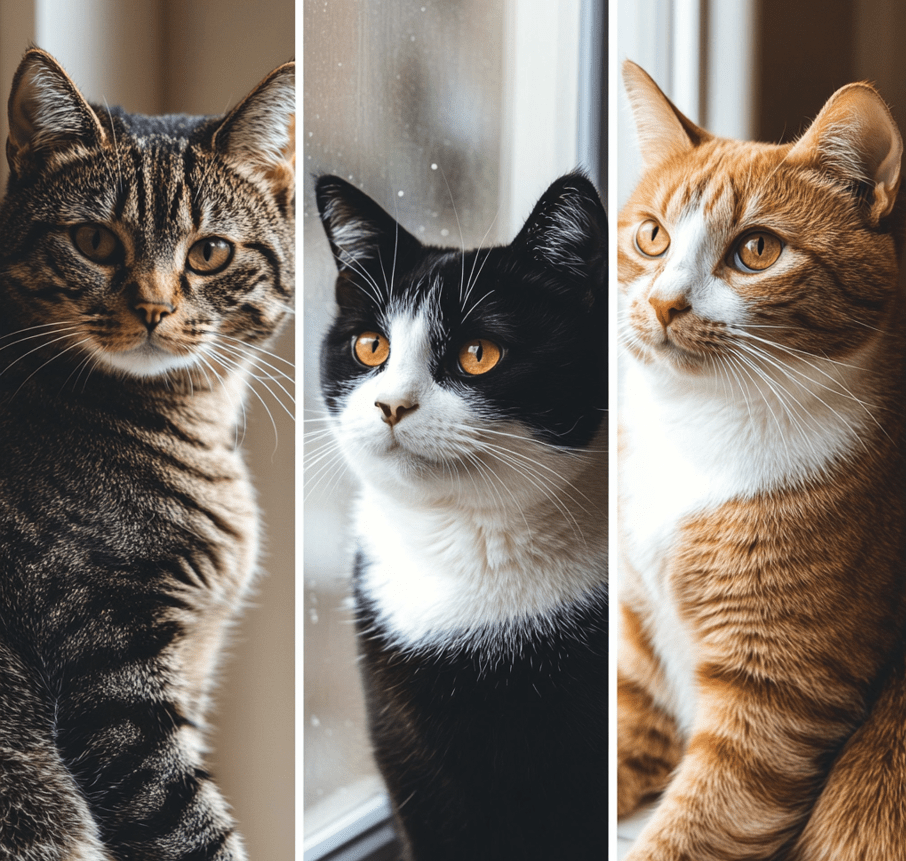
Type: Licking Mat
Skill Level: Beginner
Food Type: Wet or Dry
Description: This mat has textured surfaces to hold food, encouraging licking to slow eating and reduce stress.
Pros: Affordable, calming, easy to clean.
Cons: May be too simple for advanced cats.
Why It’s Great: Perfect for Domestic Shorthairs prone to anxiety, this mat provides a soothing activity to prevent boredom.
How to Choose the Right Puzzle Feeder for Your Domestic Shorthair
Selecting the best puzzle feeder depends on your cat’s personality, skill level, and dietary preferences. Here are key factors to consider:
Skill Level: Start with beginner-friendly feeders for kittens or cats new to puzzles to avoid frustration. Gradually increase difficulty as they improve.
Food Type: Ensure the feeder accommodates your cat’s diet, whether wet, dry, or a mix.
Material: Choose durable, non-toxic materials like BPA-free plastic or silicone that can withstand scratching and biting.
Ease of Cleaning: Opt for dishwasher-safe or easy-to-wash feeders to maintain hygiene.
Cat’s Preferences: Some Domestic Shorthairs prefer pawing, while others enjoy licking or chasing. Observe your cat’s play style to choose a suitable feeder.
Size and Stability: Ensure the feeder is appropriately sized and stable to prevent tipping or choking hazards.
Introducing Puzzle Feeders to Your Domestic Shorthair
Introducing a puzzle feeder requires patience to ensure your cat enjoys the experience. Follow these steps:
Start Simple: Begin with an easy feeder and place food near or inside it to help your cat understand the concept.
Use High-Value Treats: Entice your cat with their favorite treats or kibble to motivate them to engage.
Demonstrate: Gently move the feeder’s parts to show your cat how it works.
Gradual Transition: Mix puzzle feeding with regular bowl feeding initially, gradually increasing reliance on the feeder.
Monitor Progress: Supervise your cat to ensure they’re not frustrated and adjust the difficulty as needed.
DIY Puzzle Feeders for Domestic Shorthairs
If you’re on a budget, you can create homemade puzzle feeders using household items. Here are two simple ideas:
1. Toilet Paper Roll Feeder
Materials: Empty toilet paper rolls, scissors, a shoebox.
Instructions: Cut small holes in the rolls, place kibble inside, and seal the ends. Arrange the rolls in a shoebox for stability. Your cat will paw or nudge the rolls to release food.
Benefits: Encourages problem-solving and is cost-effective.
2. Plastic Bottle Feeder
Materials: Clean plastic bottle, scissors.
Instructions: Cut small holes in the bottle’s sides, fill with kibble, and secure the cap. Your cat will roll the bottle to dispense food.
Benefits: Promotes physical activity and mimics mobile feeders.
Always supervise your cat with DIY feeders to ensure safety and avoid ingestion of non-food materials.
Common Mistakes to Avoid with Puzzle Feeders
Choosing the Wrong Difficulty: A feeder that’s too hard can frustrate your cat, while one that’s too easy may not provide enough stimulation.
Ignoring Cleaning: Dirty feeders can harbor bacteria, so clean them regularly.
Overfeeding: Monitor portion sizes to prevent weight gain, especially with treat-heavy feeders.
Lack of Variety: Rotate different feeders to keep your Domestic Shorthair engaged and prevent boredom from repetitive tasks.
Not Supervising: Always watch your cat initially to ensure they use the feeder safely.
Additional Tips for Preventing Boredom in Domestic Shorthairs
While puzzle feeders are highly effective, combining them with other enrichment activities can further enhance your cat’s well-being:
Interactive Toys: Toys like feather wands or laser pointers engage your cat’s hunting instincts.
Vertical Spaces: Cat trees or shelves provide climbing opportunities, satisfying their need to explore.
Training: Teach your Domestic Shorthair simple tricks like “sit” or “high-five” for mental stimulation.
Window Views: Place a perch near a window to allow your cat to watch birds or outdoor activity.
Social Interaction: Spend quality time playing or cuddling with your cat to strengthen your bond.
Conclusion

Puzzle feeders are a game-changer for Domestic Shorthairs, offering a fun and effective way to prevent boredom while promoting mental and physical health. By engaging their natural hunting instincts, these feeders keep your cat entertained, reduce stress, and encourage healthier eating habits. From the Nina Ottosson Buggin’ Out Puzzle to the calming LickiMat Catster, the options listed above cater to various skill levels and preferences, ensuring there’s a perfect feeder for every Domestic Shorthair. By choosing the right feeder, introducing it gradually, and complementing it with other enrichment activities, you can create a stimulating environment that keeps your feline friend happy and healthy. Invest in a puzzle feeder today and watch your Domestic Shorthair thrive!

